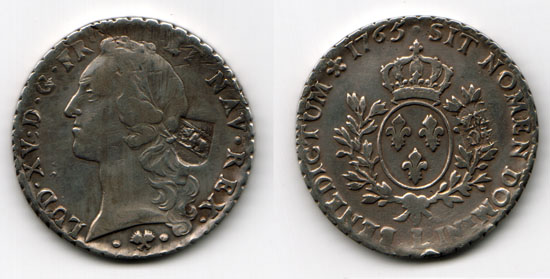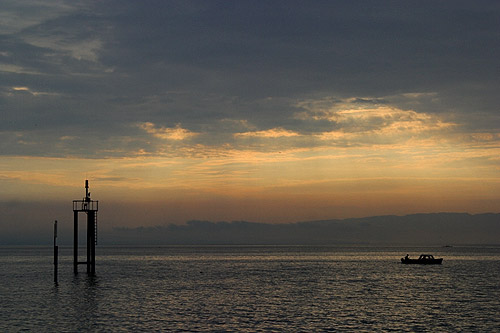|
Horn, Switzerland
Horn is a municipality in the district of Arbon in the canton of Thurgau in Switzerland. Horn is an exclave of Thurgau, enclaved in the canton of St. Gallen. History Horn is first mentioned in 1155 as ''Horna''. The ''Kehlhof'' in Horn was built in the 9th century, probably for the Diocese of Constance. In 1463, the Bishop of Constance acquired the entire bailiwick of Horn. Until 1798 the city was under the court at Arbon, where the Bishop held the high and low courts. The geographic and administrative municipalities were established in 1816, and in 1870 merged into a combined municipality. Horn was in the parish of Arbon. In 1877 a shared chapel was established. Then, in 1911 the Catholic parish was established, followed by a Reformed parish in 1920. In the 19th century the local economy was dominated by fishing, weaving and handicrafts. In 1824 a steamship company began providing regular service, which allowed the economy to grow. Bad Horn in Horn was advertised as ... [...More Info...] [...Related Items...] OR: [Wikipedia] [Google] [Baidu] |
Arbon (district)
Arbon District is one of the five districts of the canton of Thurgau in Switzerland. It has a population of (as of ). Its capital is the town of Arbon Arbon is a historic town and a municipality and district capital of the district of Arbon in the canton of Thurgau in Switzerland. Arbon is located on the southern shore of Lake Constance, on a railway line between Konstanz/ Romanshorn and Ror .... The district contains the following municipalities: References {{Coord, 47, 31, N, 9, 26, E, source:eowiki_region:CH, display=title Districts of Thurgau ... [...More Info...] [...Related Items...] OR: [Wikipedia] [Google] [Baidu] |
Swiss Reformed Church
The Protestant Church in Switzerland (PCS), (EKS); french: Église évangélique réformée de Suisse (EERS); it, Chiesa evangelica riformata in Svizzera (CERiS); rm, Baselgia evangelica refurmada da la Svizra (BRRS) formerly named Federation of Swiss Protestant Churches (SEK); french: Fédération des Eglises protestantes de Suisse (FEPS); it, Federazione delle Chiese evangeliche della Svizzera; rm, Federaziun da las baselgias evangelicas da la Svizra until 31 December 2019, is a federation of 25 member churches – 24 Landeskirche, cantonal churches and the Evangelical-Methodist Church of Switzerland. The PCS is not a church in a theological understanding, because every member is independent with their own theological and formal organisation. It serves as a legal umbrella before the federal government and represents the church in international relations. Except for the Evangelical-Methodist Church, which covers all of Switzerland, the member churches are restricted to a cert ... [...More Info...] [...Related Items...] OR: [Wikipedia] [Google] [Baidu] |
Christian Democratic People's Party Of Switzerland
The Christian Democratic People's Party of Switzerland (german: Christlichdemokratische Volkspartei der Schweiz, CVP), also called the Christian Democratic Party (french: Parti démocrate-chrétien, PDC), Democratic People's Party ( it, Partito Popolare Democratico, PPD) and Swiss Christian Democratic Party ( rm, ), PCD), was a Christian-democratic political party in Switzerland. On 1 January 2021, it merged with the Conservative Democratic Party of Switzerland (BDP/PBD) to form The Centre, which now operates at the federal level. The Christian Democratic People's Party will continue to exist at the cantonal level as individual local and regional parties determine their status. Its 28 parliamentary seats in the National Council and 13 parliamentary seats in the Council of States were transferred to the new party, as was its sole executive seat on the Federal Council, held by Viola Amherd. The party was founded as the Catholic Conservative Party in 1912. It peaked in the 1 ... [...More Info...] [...Related Items...] OR: [Wikipedia] [Google] [Baidu] |
Swiss People's Party
The Swiss People's Party (german: Schweizerische Volkspartei, SVP; rm, Partida populara Svizra, PPS), also known as the Democratic Union of the Centre (french: Union démocratique du centre, UDC; it, Unione Democratica di Centro, UDC), is a national-conservative, right-wing populist political party in Switzerland. Chaired by Marco Chiesa, it is the largest party in the Federal Assembly, with 53 members of the National Council and 6 of the Council of States. The SVP originated in 1971 as a merger of the Party of Farmers, Traders and Independents (BGB) and the Democratic Party, while the BGB, in turn, had been founded in the context of the emerging local farmers' parties in the late 1910s. The SVP initially did not enjoy any increased support beyond that of the BGB, retaining around 11% of the vote through the 1970s and 1980s. This changed however during the 1990s, when the party underwent deep structural and ideological changes under the influence of Christoph Blocher; the S ... [...More Info...] [...Related Items...] OR: [Wikipedia] [Google] [Baidu] |
2007 Swiss Federal Election
Elections to the Swiss Federal Assembly, the federal parliament of Switzerland, were held on Sunday, 21 October 2007. In a few cantons, a second round of the elections to the Council of States was held on 11 November, 18 November, and 25 November 2007. For the 48th legislative term of the federal parliament (2007–2011), voters in 26 cantons elected all 200 members of the National Council as well as 43 out of 46 members of the Council of States. The other three members of the Council of States for that term of service were elected at an earlier date.The date of the election of the members of the Council of States is a matter of cantonal law. 24 cantons have chosen to let the elections coincide with the federally regulated National Council elections. Two cantons are electing their members of the Council of States at an earlier date: Zug reelected its incumbents Peter Bieri and Rolf Schweiger on 29 October 2006, while Appenzell Innerrhoden elected Ivo Bischofsberger as its ... [...More Info...] [...Related Items...] OR: [Wikipedia] [Google] [Baidu] |
Swiss Franc
The Swiss franc is the currency and legal tender of Switzerland and Liechtenstein. It is also legal tender in the Italian exclave of Campione d'Italia which is surrounded by Swiss territory. The Swiss National Bank (SNB) issues banknotes and the federal mint Swissmint issues coins. In its polyglot environment, it is often simply referred as german: Franken, french: franc, it, franco and rm, franc. It is also designated through signes: ''Fr'' Some fonts render the currency sign character "₣" (unicodebr>U+20A3 as ligatured Fr, following the German language convention for the Swiss Franc. However, most fonts render the character as F with a strikethrough on the lower left, which is the unofficial sign of French Franc. (in German language), ''fr.'' (in French, Italian, Romansh languages), as well as in any other language, or internationally as ''CHF'' which stands for ''.'' This acronym also serves as eponymous ISO 4217 code of the currency, CHF being used by banks and f ... [...More Info...] [...Related Items...] OR: [Wikipedia] [Google] [Baidu] |
Population Growth
Population growth is the increase in the number of people in a population or dispersed group. Actual global human population growth amounts to around 83 million annually, or 1.1% per year. The global population has grown from 1 billion in 1800 to 7.9 billion in 2020. The UN projected population to keep growing, and estimates have put the total population at 8.6 billion by mid-2030, 9.8 billion by mid-2050 and 11.2 billion by 2100. However, some academics outside the UN have increasingly developed human population models that account for additional downward pressures on population growth; in such a scenario population would peak before 2100. World human population has been growing since the end of the Black Death, around the year 1350. A mix of technological advancement that improved agricultural productivity and sanitation and medical advancement that reduced mortality increased population growth. In some geographies, this has slowed through the process called the demographic ... [...More Info...] [...Related Items...] OR: [Wikipedia] [Google] [Baidu] |
Portuguese Language
Portuguese ( or, in full, ) is a western Romance language of the Indo-European language family, originating in the Iberian Peninsula of Europe. It is an official language of Portugal, Brazil, Cape Verde, Angola, Mozambique, Guinea-Bissau and São Tomé and Príncipe, while having co-official language status in East Timor, Equatorial Guinea, and Macau. A Portuguese-speaking person or nation is referred to as "Lusophone" (). As the result of expansion during colonial times, a cultural presence of Portuguese speakers is also found around the world. Portuguese is part of the Ibero-Romance group that evolved from several dialects of Vulgar Latin in the medieval Kingdom of Galicia and the County of Portugal, and has kept some Celtic phonology in its lexicon. With approximately 250 million native speakers and 24 million L2 (second language) speakers, Portuguese has approximately 274 million total speakers. It is usually listed as the sixth-most spoken language, the third-mos ... [...More Info...] [...Related Items...] OR: [Wikipedia] [Google] [Baidu] |
Italian Language
Italian (''italiano'' or ) is a Romance language of the Indo-European language family that evolved from the Vulgar Latin of the Roman Empire. Together with Sardinian, Italian is the least divergent language from Latin. Spoken by about 85 million people (2022), Italian is an official language in Italy, Switzerland ( Ticino and the Grisons), San Marino, and Vatican City. It has an official minority status in western Istria (Croatia and Slovenia). Italian is also spoken by large immigrant and expatriate communities in the Americas and Australia.Ethnologue report for language code:ita (Italy) – Gordon, Raymond G., Jr. (ed.), 2005. Ethnologue: Languages of the World, Fifteenth edition. Dallas, Tex.: SIL International. Online version ... [...More Info...] [...Related Items...] OR: [Wikipedia] [Google] [Baidu] |
German Language
German ( ) is a West Germanic language mainly spoken in Central Europe. It is the most widely spoken and official or co-official language in Germany, Austria, Switzerland, Liechtenstein, and the Italian province of South Tyrol. It is also a co-official language of Luxembourg and Belgium, as well as a national language in Namibia. Outside Germany, it is also spoken by German communities in France ( Bas-Rhin), Czech Republic (North Bohemia), Poland ( Upper Silesia), Slovakia (Bratislava Region), and Hungary ( Sopron). German is most similar to other languages within the West Germanic language branch, including Afrikaans, Dutch, English, the Frisian languages, Low German, Luxembourgish, Scots, and Yiddish. It also contains close similarities in vocabulary to some languages in the North Germanic group, such as Danish, Norwegian, and Swedish. German is the second most widely spoken Germanic language after English, which is also a West Germanic language. German ... [...More Info...] [...Related Items...] OR: [Wikipedia] [Google] [Baidu] |
Arbon
Arbon is a historic town and a municipality and district capital of the district of Arbon in the canton of Thurgau in Switzerland. Arbon is located on the southern shore of Lake Constance, on a railway line between Konstanz/ Romanshorn and Rorschach/ Chur, or St. Gallen, respectively. It is the site of prehistoric settlements reaching back 6500 years. Elements of the castle on the peninsula were part of a Late Roman defensive fortification that developed into a medieval town in the first half of the thirteenth century. The official language of Arbon is (the Swiss variety of Standard) German, but the main spoken language is the local variant of the Alemannic Swiss German dialect. Geography Arbon is situated on a peninsula on the southwest shore of Lake Constance between Romanshorn and Rorschach. On the south, the municipality borders the canton of St. Gallen. St. Gallen is the nearest larger city. The surrounding hills are remaining moraines of the Rhine glacier that e ... [...More Info...] [...Related Items...] OR: [Wikipedia] [Google] [Baidu] |








